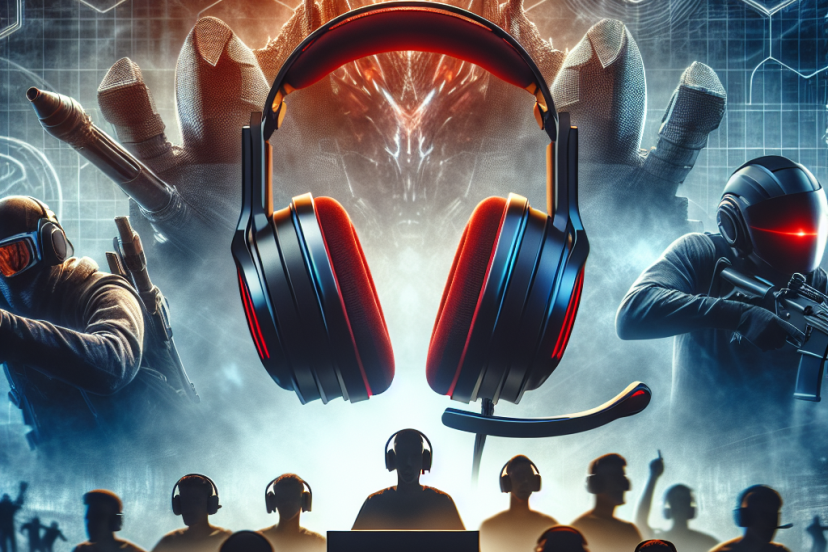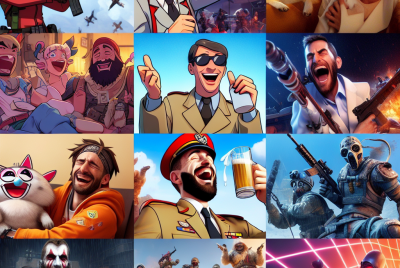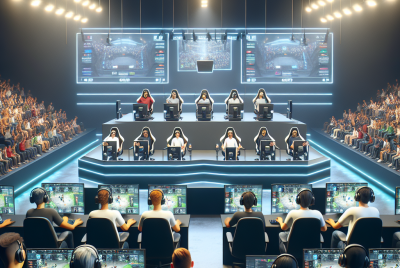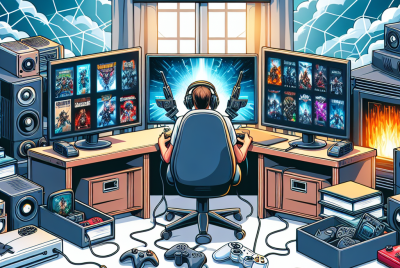The Role of NFTs in Modern Gaming: Trends and Controversies
The Role of NFTs in Modern Gaming: Trends and Controversies
Understanding NFTs
Non-Fungible Tokens (NFTs) have emerged as a revolutionary technology in the digital landscape, especially within the realm of gaming. Unlike cryptocurrencies such as Bitcoin or Ethereum, which are fungible and can be exchanged on a one-to-one basis, NFTs are unique digital assets that represent ownership over a specific item, piece of art, or in-game asset. This uniqueness is fundamental to their appeal in gaming, where players seek to own exclusive items, skins, and characters. Each NFT possesses metadata that distinguishes it from others, making it verifiable on blockchain networks like Ethereum, Binance Smart Chain, and Flow.
Evolution of Gaming and the Integration of NFTs
The integration of NFTs into gaming is not entirely new but has gained significant traction over the last few years. Traditionally, gamers purchased titles, expansions, and in-game items without actual ownership. The rise of blockchain technology has prompted developers to explore how NFTs can reshape this dynamic, granting players true ownership over their digital assets. Titles like CryptoKitties laid the groundwork for blockchain gaming, allowing players to breed and trade virtual cats on the Ethereum network, showcasing the potential of NFTs to create user-driven economies within games.
Current Trends in NFT Gaming
- Play-to-Earn Models: The most prominent trend in NFT gaming is the play-to-earn model, which enables players to earn real-world value through gaming. Titles like Axie Infinity have popularized this approach, allowing players to earn tokens by completing tasks, battling, and breeding creatures. These tokens can be traded for real money, incentivizing players to invest time and effort. This model has attracted a diverse player base, including those in developing countries where traditional job opportunities may be limited.
- In-Game Economies: Many modern games now incorporate robust in-game economies built around NFTs. Players can buy, sell, and trade assets, such as characters, skins, or weapons, creating a decentralized marketplace. For instance, Decentraland and The Sandbox have established virtual worlds where users can purchase and develop land, showcasing a growing trend where the value of digital real estate rivals that of physical land.
- Interoperability: As the NFT ecosystem evolves, interoperability between different games and platforms has become a trend. Players want the ability to use their assets across games, a concept termed “interoperable NFTs.” This has prompted developers to consider how unique assets can transition between titles, enhancing the player experience. Cross-game usage could foster community growth, as users bring their assets from one game to another, increasing the overall value of NFTs.
Controversies and Criticisms
Despite the excitement surrounding NFTs, various controversies accompany their rise in gaming. As with any emerging technology, understanding potential pitfalls is crucial.
- Environmental Impact: One of the most pressing concerns involves the environmental impact associated with NFTs. Blockchain networks like Ethereum utilize energy-intensive proof-of-work mining processes. Critics argue that the carbon footprint of minting and trading NFTs contributes to climate change. Many in the gaming community have called for more sustainable practices, leading to discussions about transitioning to more eco-friendly options, including proof-of-stake algorithms that significantly reduce energy consumption.
- Speculative Market: The NFT market has been characterized by extreme volatility and speculation, raising concerns about its long-term sustainability. While some players and investors have made significant profits, many others have experienced losses. The influx of speculative investors can lead to market bubbles, where the value of digital assets may not accurately reflect their intrinsic worth. This uncertainty may discourage traditional gamers who are wary of the investment aspect overshadowing gameplay.
- Access and Exclusivity: While NFTs aim to democratize ownership, there are concerns over access. The costs associated with purchasing NFTs can be prohibitive, especially for low-income gamers. This exclusivity can create divides within gaming communities, where only those with disposable income can fully participate. Developers face the challenge of striking a balance between creating valuable assets and ensuring that their games remain accessible and inclusive.
- Security and Ownership Issues: The security of NFTs is another contentious issue. While blockchain technology itself is secure, users’ experiences can be compromised through hacks, phishing, and fraud. Players often fall victim to scams, losing ownership of their NFTs. Furthermore, the question of bilateral ownership has surfaced: if a game ceases to exist, what happens to the NFTs within it? Without a reliable ecosystem, the investments players make could vanish, leading to significant financial losses.
Game Developers and Activism
The involvement of game developers in the NFT space has sparked debates about their responsibilities and roles. Major companies like Ubisoft and Electronic Arts have expressed interest in NFTs, while other developers have vehemently opposed the integration of these technologies. Critics argue that introducing NFTs shifts focus from creating compelling gameplay experiences to monetization strategies, sidelining the core qualities that define engaging gaming.
Many independent developers assert that incorporating NFTs can provide funding opportunities that allow for creative freedom and innovation. By creating accountable revenue streams, small studios can release quality games without relying exclusively on traditional funding methods.
Community Responses and Adaptations
Despite the controversies, gaming communities have been reactive to the evolving NFT landscape. Some players wholeheartedly embrace the new paradigms, advocating for projects that prioritize player autonomy and encourage creative expression. Others remain skeptical, questioning the implications of a pay-to-win model that may undermine skill-based competition.
Many games are exploring hybrid approaches, where NFTs coexist with traditional gaming mechanics. This attracts both enthusiasts of cryptocurrency and mainstream gamers, creating a diverse player ecosystem. Developers prioritize transparency, user feedback, and social impact to cultivate an inclusive environment that considers the broader implications of NFT adoption.
Future Outlook for NFTs in Gaming
As NFTs continue to evolve, the future of gaming may be marked by further innovation and exploration of uncharted territories. Whether integrating NFTs becomes a commonplace mechanism or a niche segment of the industry remains to be seen. Initiatives focusing on environmental sustainability, regulatory compliance, and community ownership will shape the development of this technology.
Furthermore, the increasing attention from regulatory bodies worldwide will play a role in determining how NFTs coexist with traditional gaming structures. Adapting to a rapidly changing landscape is critical, and stakeholders must navigate the delicate balance between innovation and ethical considerations.
In conclusion, the role of NFTs in modern gaming is marked by both exciting trends and significant controversies. As the gaming community navigates the complexities of ownership, access, and value in this evolving landscape, the potential for NFT gaming remains promising, contingent on responsible development and inclusive practices. With ongoing dialogue and adaptation, NFTs can redefine the relationship between players and games, creating opportunities that benefit both developers and gamers alike.




